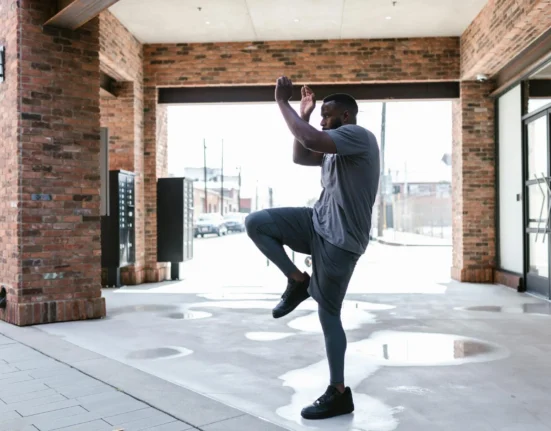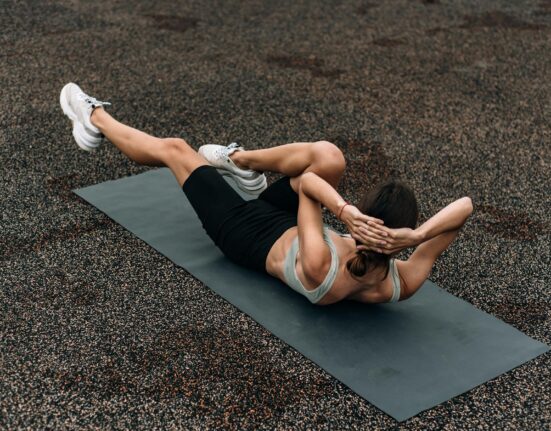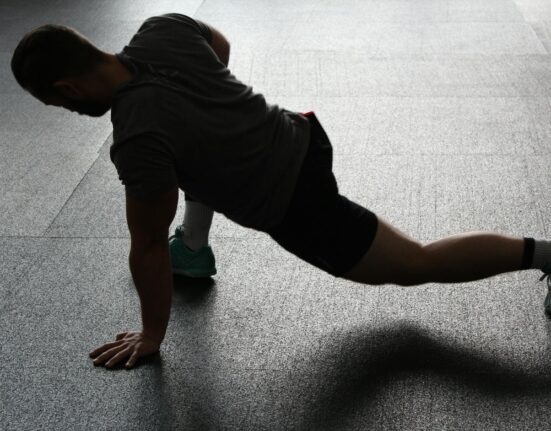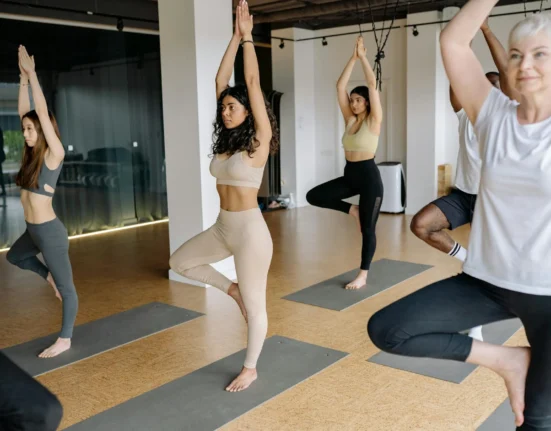Starting a running routine might feel a bit overwhelming at first, but it doesn’t have to be. Running is one of the simplest ways to boost your fitness, clear your mind, and reduce stress. The key? Start small, stay consistent, and listen to your body. Whether you’re looking to build strength, improve your mood, or just get moving, this guide will help you take those first steps with confidence. Let’s make running work for you, one step at a time.
Understand the Benefits of Running
If you’re considering starting a running routine, you’re on the right track. Running is one of the most beneficial physical activities for beginners, offering noticeable improvements not only in your physical fitness but also in your mood and mental clarity. Whether you’re lacing up sneakers to shed a few pounds, clear your head, or simply improve your health, the benefits of running go well beyond just fitness.
Physical Benefits: Build a Stronger, Healthier You
Running engages your entire body, helping you grow stronger with every step. Here’s how:
- Improved Cardiovascular Health: Running gets your heart pumping and blood flowing, reducing your risk of heart disease. In fact, studies show that even 10 minutes of running per day can make a big difference for your heart health (source).
- Weight Management: If you’re aiming to lose weight or maintain a healthy one, running burns calories efficiently. It’s one of the fastest ways to create a calorie deficit.
- Increased Bone Strength: Weight-bearing exercises, like running, strengthen your bones over time, reducing your risk of osteoporosis (source).
Consistency is key. Even if you’re just jogging for short durations, these benefits will compound over time.
Mental Benefits: Clear Your Mind, Focus Your Energy
Running doesn’t just work wonders for your body – it also gives your brain a boost:
- Stress Relief: Running naturally increases endorphins, the chemicals in your brain that help you feel happy and reduce stress.
- Sharper Focus and Memory: Regular cardiovascular exercise, including running, has been linked to better cognitive function and memory as you age (source).
- Mental Toughness: Every time you overcome the impulse to quit, you’re growing mentally stronger.
Some runners even experience the so-called “runner’s high,” a rush of euphoria and relaxation that can be incredibly motivating.
Emotional Perks: Happiness Starts with a Jog
Feelings of accomplishment and empowerment are common emotional benefits of running. Here’s what makes running so emotionally uplifting:
- Mood Booster: Running regularly has been proven to alleviate symptoms of depression and anxiety due to the release of serotonin and dopamine (source).
- Confidence Builder: As you hit new milestones—like running a mile without stopping—you develop a growing sense of pride in yourself.
- Time for Introspection: Running often gives you space for self-reflection, allowing you to process emotions and clear your mind.
Building Stamina: The Key to Long-Term Success
One of the most rewarding parts of starting a running routine is watching how your stamina grows:
- At first, even 5 minutes might seem challenging, but over time, your body adapts, and what felt hard becomes your new normal.
- Running helps train your muscles, lungs, and heart to work together more efficiently, so you can run farther and longer without feeling winded.
Stick with it—progress might feel gradual, but it’s happening. Each run builds strength, perseverance, and resilience.
Why Running is Perfect for Beginners
Running is simple, flexible, and requires minimal equipment. You don’t need an expensive gym membership or fancy gear to get started. All you need is a comfortable pair of shoes and a safe route to explore. Plus, you can go at your own pace, making it an approachable activity for virtually anyone, regardless of current fitness level.

Photo by Peter Jochim
Running is one of the most inclusive workouts—you set the goals, and the journey is all yours.
Set Clear and Realistic Goals
Starting your running journey without a roadmap can quickly lead to frustration or burnout. When you set goals—clear, achievable ones—you create a foundation for success. Goals not only give your routine structure but also keep you motivated when the going gets tough. Here’s how you can set yourself up for progress, step by step.
Define Your Purpose for Running
Knowing why you’re lacing up your sneakers is the first step to making running a part of your life. Are you looking to shed a few pounds? Hoping to clear your mind after a long day? Maybe you’re just eager to stay active and improve your overall health. Whatever the reason, write it down. A clearly defined purpose will remind you why you started on days when motivation runs low.
According to resources like How to Set Running Goals, having a clear intention, such as “running to train for a 5K” or “jogging to de-stress,” provides direction and keeps you focused. When your goals align with personal priorities, commitment comes naturally.
Start with Small Steps
Big goals are great—but trying to conquer too much too soon can backfire. Begin with approachable milestones, such as jogging for just 10 minutes or alternating between walking and running. Think of it this way: every big succesful journey begins with a single step, and so does running.
- Start by jogging for 1 minute, then walking for 2 minutes. Repeat this pattern for 15–20 minutes.
- Gradually increase your running intervals as you feel more comfortable.
- Stay patient—progress comes with consistency, not speed.
As you ease into running, you’ll notice that the small wins—like completing a week of runs—build your confidence and set the stage for greater achievements. This beginner’s guide to goal setting emphasizes breaking challenges into manageable pieces to prevent overwhelm.

Photo by Ketut Subiyanto
Track Your Progress
Tracking isn’t just about seeing how far or fast you run—it’s a tool to celebrate your growth, spot patterns, and stay engaged. Whether you prefer a simple notebook, a digital running log, or an app like Strava, keep a record of every effort you make.
Here are some things to log:
- Distance covered
- How long you ran (time)
- How you felt during the run
- Weather conditions or other factors that might’ve affected your run
Monitoring these details allows you to adjust your routine intelligently. For example, you’ll know when to increase distance or add in recovery days. Bonus: looking back on your progress can provide a confidence boost on tough days. Learn more about the importance of tracking at The Obvious Technique for Getting Faster.
Tracking tools also provide visual feedback, giving you clear insights into your improvements over time. Nothing beats the sense of accomplishment you feel when you look back at where you started.
Create a Safe and Enjoyable Plan
Starting a running routine as a beginner is exciting, but creating a plan that’s safe and enjoyable is crucial for long-term success. By focusing on the right gear, pacing, and environment, you’ll set yourself up to not only stick to your new habit but actually enjoy it.
Choose the Right Gear
Your gear can make or break your running experience, especially when starting out. Most importantly, invest in a quality pair of running shoes that provide the right support for your feet. Wearing improper shoes can lead to discomfort or injuries, while the right pair can improve your overall performance.
Here’s what to keep in mind when picking running shoes:
- Comfort is key: Shoes should feel good as soon as you try them on. There’s no “breaking-in” period for running shoes.
- Know your needs: Identify whether you’ll run on roads, trails, or treadmills, as there are specific shoes designed for these surfaces.
- Get the right fit: Leave about a thumb’s width of space between your toes and the front of the shoe to avoid bruises during long runs.
For a detailed guide on how to select running shoes, check out this resource: How to Choose the Best Running Shoes.
In addition to shoes, invest in moisture-wicking apparel to stay comfortable. Opt for clothes that prevent chafing and keep you cool during runs. Proper gear helps you focus on running rather than distractions like discomfort or blisters.

Photo by Giuseppe Cognata
Establish a Comfortable Pace
When you’re new to running, pushing yourself too hard might seem like the quickest way to improve, but it can leave you exhausted—or worse, injured. Instead, prioritize finding a pace that feels manageable. Remember, this phase is all about building stamina, not breaking records.
Here are two beginner-friendly strategies to find a comfortable pace:
- The Talk Test: If you can speak full sentences without gasping for air, you’re at the right pace. If talking feels impossible, slow down.
- Run-Walk Method: Alternate between running and walking, such as jogging for one minute and walking for two. Gradually increase the jogging intervals as your endurance improves.
Starting slowly allows your body to adapt to the new demands of running. For more advice on pacing, check out How to Pace Yourself When Running.
Find the Best Time and Place to Run
Consistency is easier when running is convenient and enjoyable. With a little thought, you can identify the best time and place to suit your lifestyle and preferences.
When choosing your running time, consider:
- Morning: Cooler temperatures and fewer distractions make mornings ideal for some.
- Afternoon: If you feel sluggish in the mornings, a midday run can boost your energy.
- Evening: Running later in the day can help you unwind from daily stress.
As for location, find a spot that feels safe and inspires you to keep going. Parks, quiet neighborhoods, and tracks are great choices for beginners. Avoid isolated areas and consider teaming up with a friend or joining a group. These adjustments minimize obstacles and make it easier to stay committed. Read more tips on Best Time to Run.
By selecting the right environment, time, and routine, you’re more likely to enjoy running and stick with it for the long haul.
Incorporate Helpful Tips for Beginners
Starting out as a runner can be both exciting and a bit daunting. It’s not just about putting one foot in front of the other—it’s about building habits and adopting strategies to set yourself up for success. Here are a few essential tips to keep you moving in the right direction.
Stay Hydrated and Fuel Well
Proper hydration and nutrition play a huge role in your running performance and recovery. Your body needs fluids and nutrients to power through each run and bounce back afterward.
- Drink water consistently: Staying hydrated helps your muscles work efficiently and prevents fatigue. Carry a water bottle or plan routes with accessible fountains. Learn more about the importance of hydration from this guide.
- Electrolytes matter: During longer runs, especially in the heat, replenish electrolytes to avoid cramping. Options like sports drinks or natural alternatives such as coconut water work well.
- Eat balanced meals: Your meals should include carbs for energy, protein for muscle repair, and healthy fats for sustained endurance. Avoid skipping meals, as this can sap your energy reserves.
Starting your runs on an empty tank often leads to burnout, while proper fueling feels like giving your body the green light to go further.

Photo by Maksim Goncharenok
Embrace Rest Days
New runners often feel the urge to hit the ground running every day, but rest days are just as crucial as training days. They allow your body to recover from the micro-stresses of exercise and come back stronger.
- Muscle repair: Running causes small tears in your muscle fibers, which repair during rest, leading to stronger, more resilient muscles. Skipping rest can increase your risk of overuse injuries. Learn more about why recovery matters here.
- Mental reset: Rest days prevent burnout by giving your mind time to recharge. Use this downtime to reflect on your progress or explore other hobbies.
Think of rest as part of your progress, not a break from it. Even professional athletes swear by recovery days to keep themselves at the top of their game.
Listen to Your Body
Your body has a lot to say—it’ll give you signals about what it needs, when it’s thriving, or when it’s struggling. Learn to be in tune with those clues.
- Differentiate discomfort from pain: Mild soreness is typical when you’re starting a new activity. However, sharp pain or consistent discomfort should never be ignored. These could be signs of overtraining or injury. Check out tips on listening to your body here.
- Adapt as needed: Feeling overly fatigued? Scale back your routine or substitute running with light stretching or walking.
- Perform routine body scans: Mentally check in with yourself during a run—how’s your breathing? Are certain areas feeling tight or strained? Adjust to stay comfortable and avoid pushing too hard.
Listening to your body is like recalibrating a compass—it puts you back on the path to safe and sustainable running.
Celebrate Your Wins
Every step forward in your running journey deserves acknowledgment. Celebrating your progress, however small, keeps you motivated and reinforces healthy habits.
- Set milestones: Did you run for an extra minute this week? Pat yourself on the back! These small achievements build momentum.
- Reward yourself: Treat yourself to a favorite snack, a relaxing bubble bath, or even a new pair of running socks. Need ideas? This guide is great for staying inspired: Celebrate Small Wins in Your Running Journey.
- Track progress visually: Keep a journal or use a running app to watch your accomplishments grow over time—nothing beats looking back and realizing how far you’ve come.
Celebrate often, celebrate creatively, and remind yourself that every win brings you closer to your bigger goals.
Build Long-Term Habits for Success
To turn running from a temporary effort into a lasting part of your lifestyle, focusing on building sustainable habits is key. Running should feel less like a chore and more like a natural part of your day-to-day routine. Here’s how to create consistency while keeping your journey fun and adaptable.
Join a Running Group or Find a Buddy
Running with others can transform what might feel like a solo mission into a shared, rewarding experience. Social accountability is one of the most effective motivators. Knowing someone is counting on you can be that extra push to get out the door, even on days when you lack energy. Not to mention, the camaraderie and shared enthusiasm can make runs feel more enjoyable.
- Boost your motivation: A committed running partner or group can inspire you to show up consistently.
- Learn from others: Experienced runners can share advice on pacing, technique, and staying injury-free.
- Explore new routes: Running groups often know the best, most scenic paths in your area.
Looking for a running club or buddy? Check resources like The Importance of a Running Buddy or Why You Should Join a Running Club to learn more about the benefits of running with others.

Photo by RUN 4 FFWPU
Adjust Your Goals Over Time
Your first few runs might be all about simply completing the activity. As you get more comfortable, it’s natural to want to stretch your limits and see what you’re capable of achieving. Adjusting your goals as you progress ensures they stay challenging and realistic.
Here’s how to evolve your goals over time:
- Start with basic objectives like running for 10 minutes without stopping or covering your first mile.
- Gradually shift toward distance, speed, or even event goals, like finishing a 5K or running a half marathon.
- Reflect regularly: Did your initial goal feel too easy, or are you struggling? Modify as needed to realign with your current abilities.
Flexible, adaptable goals prevent plateaus and keep you from losing interest. Interested in diving deeper? Check out How to Set Running Goals for actionable tips on goal-setting.
Mix Up Your Routine
Monotony can lead to boredom—and boredom can derail even the most dedicated runner. Switching up your running routine keeps things fresh and reignites your enthusiasm. Plus, varying your workouts improves overall fitness and reduces the risk of overuse injuries.
Here are simple ways to introduce variety:
- Interval training: Alternate between short bursts of intense running and slower recovery jogs to boost performance.
- Explore new routes: Runners often find new energy by changing their scenery. Run through trails, parks, or even a different neighborhood.
- Incorporate hills: Add strength to your legs with hill runs or staircase workouts.
- Change your pace: Experiment with tempo runs, which are steady efforts just below race pace, to build endurance.
Feel stuck in your routine? Learn more about how to make your runs exciting with resources like 10 Great Workouts to Spice Up Your Running Program or How and Why You Should Mix Up Your Long Runs. Variety isn’t just the spice of life—it’s the foundation of an engaging running habit.
By integrating social connections, setting evolving goals, and keeping your runs interesting, you’ll build habits that don’t just help you start running—they’ll keep you running for the long haul.
Conclusion
Starting a running routine as a beginner is all about taking that first step, no matter how small. By focusing on realistic goals, listening to your body, and making the experience enjoyable, you’re setting yourself up for success. Remember, consistency beats perfection every time.
Every stride brings you closer to better fitness and mental clarity. The key is patience—progress may seem slow, but it’s happening. So, lace up your shoes and start where you are today. The path to a healthier, happier you starts now. Keep moving forward—you’ve got this!








